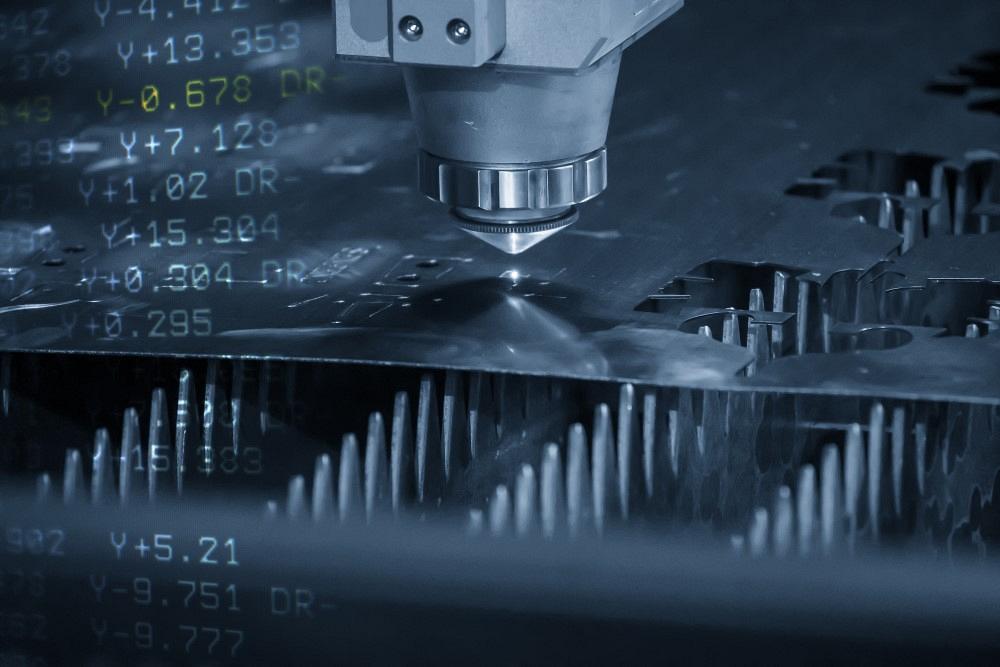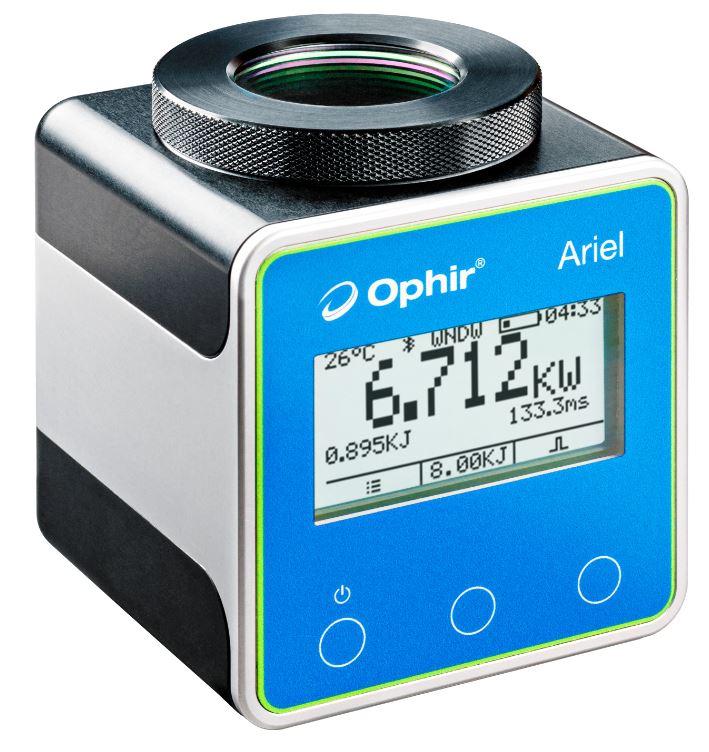Editor-in-Chief
- FMA
- The Fabricator
- FABTECH
- Canadian Metalworking
Categories
- Additive Manufacturing
- Aluminum Welding
- Arc Welding
- Assembly and Joining
- Automation and Robotics
- Bending and Forming
- Consumables
- Cutting and Weld Prep
- Electric Vehicles
- En Español
- Finishing
- Hydroforming
- Laser Cutting
- Laser Welding
- Machining
- Manufacturing Software
- Materials Handling
- Metals/Materials
- Oxyfuel Cutting
- Plasma Cutting
- Power Tools
- Punching and Other Holemaking
- Roll Forming
- Safety
- Sawing
- Shearing
- Shop Management
- Testing and Measuring
- Tube and Pipe Fabrication
- Tube and Pipe Production
- Waterjet Cutting
Industry Directory
Webcasts
Podcasts
FAB 40
Advertise
Subscribe
Account Login
Search
Is your shop's laser cutting machine running as it should?
A new measurement device tells metal fabricators whether the laser beam is performing efficiently
- By Dan Davis
- March 24, 2021
- Article
- Laser Cutting

A new laser power meter can help metal fabricators ensure that their laser cutting machine is operating as it should. Getty Images
Your company paid more than $1 million for its new laser cutting machine with automated material storage and sheet handling. Installation went well, and signs from the early days of production indicate that the machine tool is operating as intended. Everything appears to be OK.
But is it? Some fab shops won’t be able to answer that question until bad parts are produced. At that point, the laser cutting machine is shut down, and the call goes out to the service technician. The waiting game begins.
That’s not the most efficient way to watch over an important—and expensive—piece of laser cutting equipment, but that’s often the way things play out on the shop floor. Some folks think they simply don’t have to measure new fiber lasers like they once did for CO2 laser technology, which really did require more of a hands-on approach to get the focus just right prior to cutting, for example. Others think laser beam measurement is something for the service tech to do. The honest answer is that if the fabricating company wants to get the most out of its laser and it wants the quality edge-cut that the technology can deliver, it needs to consistently check on the laser beam quality.
Some fabricators even argue that checking beam quality increases downtime on the machine. Christian Dini, global business development director, Ophir Photonics, said that reminded him of an old joke that is often shared in manufacturing management classes.
“Two guys are cutting down a tree with a saw, and somebody stops by and says, ‘Oh, your saw is dull. Why don’t you sharpen it to help you cut down the tree? The two men respond that they don’t have time to do that because they have to keep cutting to get the tree down,” Dini said.
The Way to Check the Beam
Checking laser beam performance is nothing new. Even those that have engaged in the practice may have been using less-than-reliable technologies to do the job, however.
Take, for example, the use of burn paper, which was commonly used when CO2 laser systems were the dominant laser cutting technology in job shops. In this scenario, an industrial laser operator would place burn paper in the cutting chamber to align optics or cutting nozzles. When the laser was turned on, the operator could see if the paper was burned.
Some fabricators moved on to use acrylic plastic to make a 3D representation of a profile. But burning acrylic produces carcinogenic fumes, which is something that shop floor employees should probably avoid.
“Power pucks,” analog devices with mechanical displays, eventually emerged as the first power meters to provide a more accurate reflection of how the laser beam was performing. (The power puck is placed under the beam, where it absorbs the light and measures the temperature to calculate the laser beam’s power.) These pucks can be influenced by ambient temperatures, so they may not truly provide the most precise reading when testing for laser performance.
The reality that fabricators aren’t doing a good job of keeping tabs on their laser cutting machines and, if they are, they probably aren’t using the best tool has led Ophir Photonics to introduce a small, self-contained laser power meter for measuring industrial lasers. The Ariel device measures laser power from 200 mW to 8 kW.

Don’t make the mistake of assuming the laser beam in a new laser cutting machine will perform consistently over the lifetime of the machine. It should be monitored to ensure that it is performing according to OEM specifications. The Ariel laser power meter from Ophir can help with that task.
“We would like to help people understand better that what they’re dealing with is the need to keep their laser systems performing within their sweet spots—their optimum process windows,” Dini said. “If you don’t do everything right, you risk getting a higher cost per part with lower quality.”
Dini said that the device covers most of the “relevant” laser wavelengths. For the metal fabricating industry, that includes 900- to 1,100-nm fiber lasers and 10.6-µm CO2 lasers.
Similar devices used to measure laser power in high-powered machines typically are large and operate slowly, according to Ophir officials. Their size made it difficult to incorporate them in certain types of OEM equipment, such as additive manufacturing equipment with small cabinets. The Ariel is slightly wider than a paper clip. It also delivers measurements in three seconds.
“You can put the little device at the location of the action or near the working area. You don’t have to hold it. You set it up, and it can do its job,” Dini said.
The new power meter has two operational modes. When working with high-powered lasers, it reads short pulses of energy, basically shutting the laser on and off. For lasers up to 500 W, it can measure laser performance over a couple of minutes. (The device has a thermal capacity of 14 kJ before it needs to cool down. A 128- by 64-pixel LCD screen on the device or Bluetooth connection to the device’s app provides the operator with an update on how hot the power meter is getting. It should be noted that the device is not fan- or water-cooled.)
Dini said that the power meter is designed to be resistant to splashes of water and is dust-proof. A rubber plastic cover is available to protect the device’s USB port.
“If you drop it into a powder bed in an additive environment, you don’t have to worry. It’s completely sealed,” he said.
The accompanying software from Ophir presents data from the laser measurements in formats such as a time-based line graph, a needle display, or a large numeric display with supporting statistics. From there the software can be used to create more in-depth presentations that cover laser performance over an extended period of time.
Dini said that if a fabricator can see if a laser beam is not performing optimally, the operator can begin troubleshooting to find out what the problem might be. An investigation of a symptom of poor performance can help to avoid a much larger and expensive shutdown of the laser cutting machine down the road. Keeping the saw sharp keeps the operation running sharply.
About the Author

Dan Davis
2135 Point Blvd.
Elgin, IL 60123
815-227-8281
Dan Davis is editor-in-chief of The Fabricator, the industry's most widely circulated metal fabricating magazine, and its sister publications, The Tube & Pipe Journal and The Welder. He has been with the publications since April 2002.
subscribe now

The Fabricator is North America's leading magazine for the metal forming and fabricating industry. The magazine delivers the news, technical articles, and case histories that enable fabricators to do their jobs more efficiently. The Fabricator has served the industry since 1970.
start your free subscription- Stay connected from anywhere

Easily access valuable industry resources now with full access to the digital edition of The Fabricator.

Easily access valuable industry resources now with full access to the digital edition of The Welder.

Easily access valuable industry resources now with full access to the digital edition of The Tube and Pipe Journal.
- Podcasting
- Podcast:
- The Fabricator Podcast
- Published:
- 04/16/2024
- Running Time:
- 63:29
In this episode of The Fabricator Podcast, Caleb Chamberlain, co-founder and CEO of OSH Cut, discusses his company’s...
- Trending Articles
Capturing, recording equipment inspection data for FMEA

Tips for creating sheet metal tubes with perforations

Are two heads better than one in fiber laser cutting?

Supporting the metal fabricating industry through FMA

Hypertherm Associates implements Rapyuta Robotics AMRs in warehouse

- Industry Events
16th Annual Safety Conference
- April 30 - May 1, 2024
- Elgin,
Pipe and Tube Conference
- May 21 - 22, 2024
- Omaha, NE
World-Class Roll Forming Workshop
- June 5 - 6, 2024
- Louisville, KY
Advanced Laser Application Workshop
- June 25 - 27, 2024
- Novi, MI


























